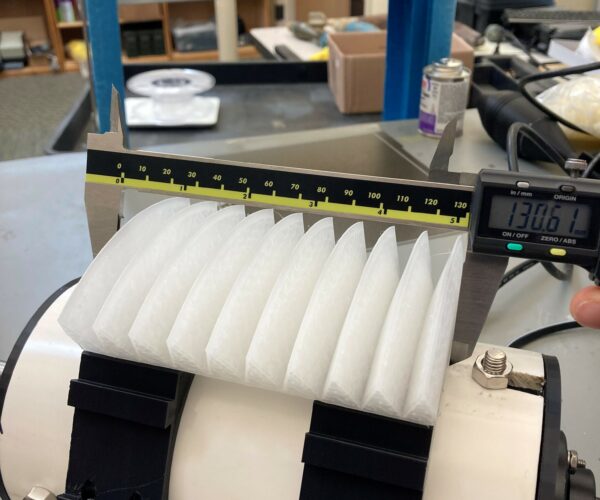Polypropylene printing troubles
I'm having trouble printing with polypropylene. Getting my part to adhere to the bed is the first challenge. I've had moderate success with packing tape, a heated bed (65degC) and an enclosure; however, if I can get past the first layers with out delamination, at some point the filament softens above the heating block and creates a 'pushing a noodle' situation. There is never a clog below this point, the filament is still solid and can be removed. It just doesn't seem to feed into the extruder.
I'm printing with Form Futura Centaur PP. Nozzle @ 225degC (235degC for the first layer) and heated bed at 65degC. I've slowed printing down drastically to 15mm/s for perimeters and 40mm/s for infill. Finally, I increased the extrusion multiplier to 1.2.
My gut feeling is that I'm not controlling temperature. The only time I have been successful was when I had the enclosure closed for the initial layers then opened it up for the duration, though this hasn't been repeatable. A picture of the one successful print is below. I need 5 more and they each take 20hours. Any help would be greatly appreciated.
Thanks,
-Zach
PP
I have only been able to get it to stick with the right surface or a bed adhesive.
--------------------
Chuck H
3D Printer Review Blog
Temperature.
With that PP you'll need to ensure that the hot end temperature for the upper layers is higher than 225°C. One trick I found was to print the first layer cooler and then increase the hot end temperature by 5°C, this allows a relatively soft polymer to flow more freely. You are also right that the cold end (i.e. the heatsink above the hot end) needs to be kept cool; there is a dilemma here as PP warps and benefits from an enclosure... but that increases the cold end temperature.
In terms of the maximum hot end temperature, PP is relatively thermally robust, so thermal degradation when increating hot end temperature isn't really an issue of much concern.
All filaments
With that PP you'll need to ensure that the hot end temperature for the upper layers is higher than 225°C. One trick I found was to print the first layer cooler and then increase the hot end temperature by 5°C, this allows a relatively soft polymer to flow more freely. You are also right that the cold end (i.e. the heatsink above the hot end) needs to be kept cool; there is a dilemma here as PP warps and benefits from an enclosure... but that increases the cold end temperature.
In terms of the maximum hot end temperature, PP is relatively thermally robust, so thermal degradation when increating hot end temperature isn't really an issue of much concern.
This is pretty much what I do with all filament unless I am confusing what you are saying.
--------------------
Chuck H
3D Printer Review Blog
